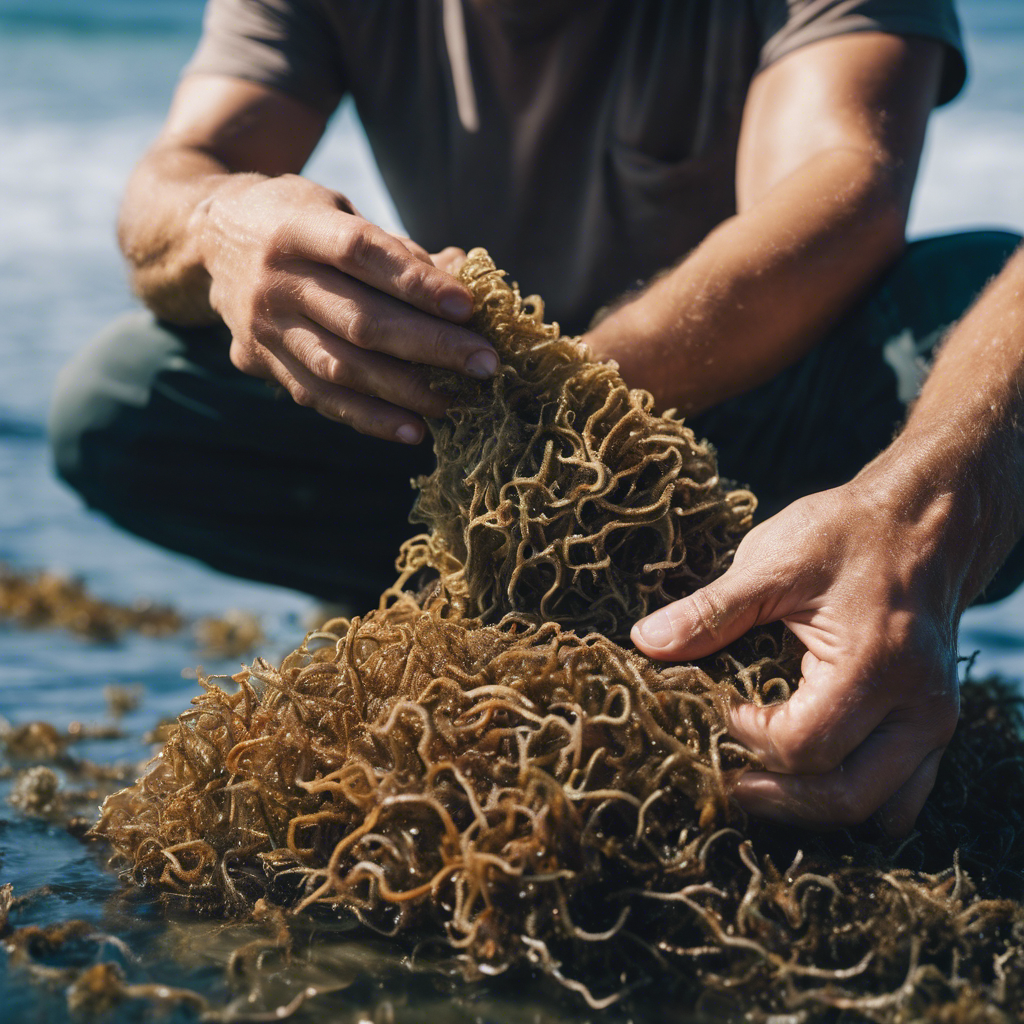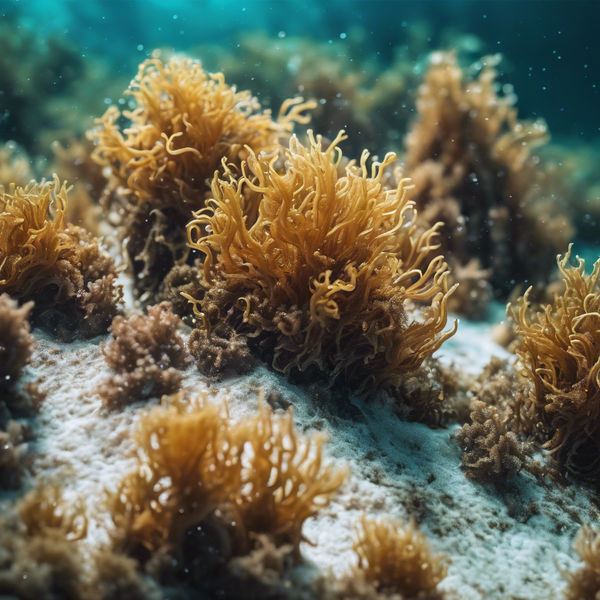Sea moss, a type of red algae, has been gaining popularity due to its potential health benefits. But where does this intriguing sea vegetable come from? In this comprehensive guide, we'll explore the natural habitats of sea moss, its harvesting methods, and its journey from the ocean to your table.
Key Takeaways:
- Understand the natural habitats where sea moss thrives.
- Learn about the sustainable harvesting practices of sea moss.
- Discover the various uses and benefits of incorporating sea moss into your diet.
The Natural Habitats of Sea Moss
Sea moss, also known as Irish moss, is commonly found along the rocky parts of the Atlantic coastlines of Europe and North America. It thrives in the intertidal zone, where the environment is tough, with constant changes in water and air exposure. This resilient algae prefers cooler waters, which is why it's abundant in areas like Ireland and Iceland, where it has been harvested for centuries.
The species of sea moss most people are familiar with is Chondrus crispus. It attaches itself to the rocks using a holdfast, and from there, it absorbs nutrients directly from the sea. The unique conditions of its habitat, including the mineral-rich water and the motion of the ocean, contribute to the nutritional profile that makes sea moss so valued.
Harvesting Sea Moss: A Sustainable Practice
Sustainable harvesting of sea moss is crucial to ensure that this resource remains available for future generations. Harvesters typically collect sea moss by hand during low tide, carefully cutting the plant just above its regenerative point to allow it to regrow. This method minimizes the impact on the ecosystem and ensures the longevity of the sea moss beds.
In some regions, sea moss is also cultivated on ropes in the ocean, which allows for more controlled growth and can reduce the strain on natural populations. Whether wild-harvested or cultivated, it's important to source sea moss from suppliers who prioritize sustainability and the health of the marine environment.
The Journey from Ocean to Table
Once harvested, sea moss undergoes a cleaning process to remove any sand, shells, or other marine debris. It's then typically dried in the sun, which preserves its nutrients and extends its shelf life. The dried sea moss can be sold whole or ground into a powder, making it easy to add to various recipes.
The journey from ocean to table doesn't end there. Sea moss is often soaked and transformed into a gel, which can be used in smoothies, soups, and even skincare products. Its versatility and health benefits have made it a sought-after ingredient in the wellness community.
Nutritional Profile of Sea Moss
Sea moss is celebrated for its rich nutritional content. It's an excellent source of iodine, which is essential for thyroid function, and it also contains potassium, calcium, and magnesium. Additionally, sea moss is packed with vitamins and antioxidants, which can support immune health.
The algae's high fiber content makes it beneficial for digestive health, as it can act as a prebiotic to feed good bacteria in the gut. With its low calorie and high nutrient density, sea moss is a valuable addition to a balanced diet.
Health Benefits of Sea Moss
The health benefits of sea moss extend beyond its nutritional value. It's been traditionally used to soothe respiratory ailments due to its mucilaginous consistency, which can help to relieve coughs and sore throats. Sea moss also contains compounds that have been shown to have antiviral and antimicrobial properties.
For those looking to support their skin health, sea moss can be a natural ally. Its high sulfur content can have a positive impact on conditions like acne, and its gel can be used as a hydrating face mask. The versatility of sea moss makes it a multifaceted addition to any health regimen.
Incorporating Sea Moss into Your Diet
Incorporating sea moss into your diet is simple and can be quite delicious. The most common way is by making sea moss gel, which can be added to smoothies, teas, and even desserts. Its neutral taste means it can easily blend into various dishes without altering their flavor profile.
For those who prefer a more direct approach, sea moss capsules and tinctures are available. These can provide a concentrated dose of the algae's benefits and are convenient for those on the go. No matter how you choose to consume it, sea moss can be a valuable addition to your diet.
Sea Moss in Skincare and Beauty
The benefits of sea moss aren't limited to internal health; it's also making waves in the skincare and beauty industry. Its hydrating properties and rich mineral content make it an excellent ingredient for moisturizers, serums, and face masks.
DIY enthusiasts can create their own sea moss skincare products at home by mixing the gel with other natural ingredients. Whether purchased or homemade, sea moss-infused skincare can help maintain a healthy, glowing complexion.
Environmental Considerations and Sea Moss
As with any natural resource, it's important to consider the environmental impact of harvesting sea moss. Overharvesting can lead to depleted populations and negatively affect marine ecosystems. Consumers can play a role in protecting these environments by choosing sea moss products from companies that adhere to responsible harvesting practices.
Climate change also poses a threat to the natural habitats of sea moss. Rising ocean temperatures and acidification can impact the growth and health of these algae. Supporting environmental initiatives and sustainable practices can help mitigate these effects and preserve sea moss for future use.
The Future of Sea Moss: Trends and Innovations
The future of sea moss looks promising, with ongoing research into its potential health benefits and applications. Innovations in cultivation and harvesting methods are making it more accessible while maintaining environmental responsibility.
As the demand for plant-based and natural products continues to grow, sea moss is likely to become a staple in health-conscious households. Its adaptability and benefits ensure that it will remain a valuable resource for years to come.
Summary
Sea moss, a nutrient-rich red algae, originates from the rocky coastlines of the Atlantic Ocean. Its sustainable harvesting and versatile uses, from dietary supplements to skincare products, have made it a popular ingredient in the wellness community. By understanding where sea moss comes from and its journey to our homes, we can appreciate its value and contribute to the preservation of its natural habitats.
FAQ Section
Q: Can sea moss be harvested year-round? A: Yes, sea moss can be harvested year-round, but it's important to follow sustainable practices to avoid overharvesting and to allow for regrowth.
Q: Is sea moss safe for everyone to consume? A: While sea moss is generally safe, those with thyroid conditions or allergies to iodine should consult with a healthcare provider before adding it to their diet due to its high iodine content.
Q: How long does sea moss gel last in the refrigerator? A: Sea moss gel can typically last up to three weeks when stored in an airtight container in the refrigerator. Always check for any signs of spoilage before use.







